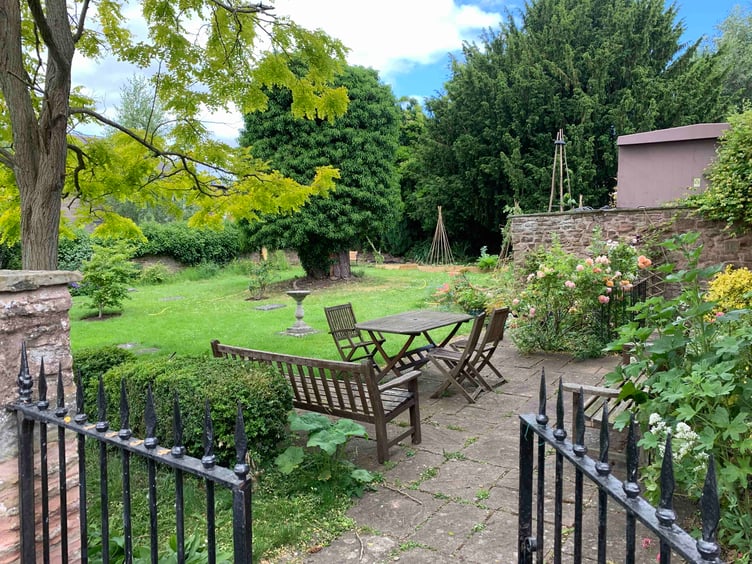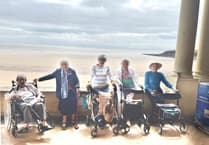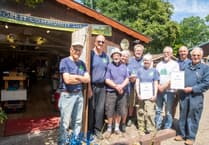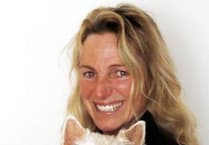NEXT week marks the 400th anniversary of the birth of George Fox, founder of the Quaker movement.
And to mark this occasion Ross-on-Wye Quakers are holding an open day on July 6, to visit the renovated burial ground on the footpath between Brampton Street and Southall Place, formerly part of the Meeting House estate.
The new Peace Garden is on land gifted by Quaker James Merrick in the early 1700s,
The L-plan plot is enclosed by stone walls which have letters and numbers etched into the walls to help locate the individual graves. The early map of the graveyard, along with an exhibition and artefacts will be available for viewing inside the Meeting House.
Local researchers have found evidence of 95 burials from 1655 - 1700 and 50 burials in 1703 - 1788. They found in the archives over 200 deaths before 1837, with many family names. The earliest civic census to give detailed information, parents and occupations only started to be recorded in 1841.
However, the history of the Ross Quakers is detailed as the organisation became social reformers.
The freedom of conscience we all enjoy, but often take for granted, was a hard-won freedom and many lives were damaged in the process that ensued after the chaos of the English Civil war (1642-1651).
The accession of William and Mary, and the passing of the Toleration Act in 1689, brought greater religious freedom and a less fearful life as the Act gave freedom of worship to all their majesties' Protestant subjects.
Non-conformists were still not allowed to enter universities or the professions, so tended to apply their energies to their businesses.
The Quaker mantra of ' honesty, integrity and fair dealing’ matched with being mindful of the need for social reform meant they often used their wealth 'to uplift the poor and oppressed' by funding schools, campaigning for improved conditions in mines and factories, and for the abolition of slavery.
In keeping with the climate and biodiversity concerns of the present-day Quakers, the garden has been improved for wildlife: deep bed vegetable cultivation, nectar rich flowers for insects and bees, and a re-lined pond for aquatic invertebrates and serve as a water source for birds and small mammals.
The pond is immediately next to the gravestones of Nathaniel Morgan and his wife, Sarah. He was an ethical banker with many business, social and religious interests. Mr Morgan was three times the Mayor of Ross and was a fervent campaigner for the abolition of slavery. He was involved in many charities, sponsored town improvements, founded the Ross Peace Society in 1816.
In 1852 Mr Morgan gave trustees £100 to invest to provide funds to ensure the upkeep of the burial grounds where he had often wandered and reflected - and now rests.

English Heritage describes the Brampton Street listing as ‘embodying the modest simplicity of Quaker meeting houses, the late Georgian building retains much of its original character and distinctive arched screen wall… principally notable “for its little altered interior and good quality internal joinery’.
Ross Meeting was at the zenith of its influence between 1775 and 1855. It had wealthy Friends who were generous in the cause for social reform.
Thomas Prichard (1765-1843) was known as 'The Patriarch of Ross' for his willingness to help the poor and to fund a Lancastrian School held at the market house.
Henry Southall (1826-1916) was a linen draper with many business, social and intellectual interests who earned himself the title 'The Grand Old Man of Ross.' He served as a magistrate, and a district and county councillor, as well as compiling meticulous meteorological records and it is because of his work that Ross remains a centre for weather recording to this day.
• Written by Ross Quakers with much of the information being taken from John Powell’s book ‘The Story of Ross Quakers’, available at £10 from Rossiter’s Books.





Comments
This article has no comments yet. Be the first to leave a comment.